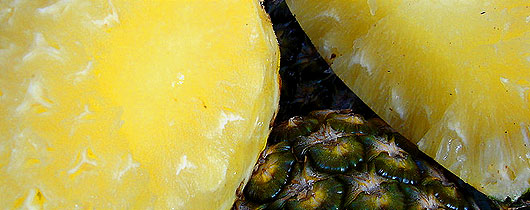
groundwater pollution and remediation pdfvirginia tech running shorts
High-resolution site characterization (HRSC) strategies and techniques use scale-appropriate measurement and sample density to define with greater certainty contaminant distributions and their surrounding environment. This paper provides background information, general guidelines, and specifics for methods and procedures that can be used to detect whether an oxidant (permanganate or persulfate) is present in groundwater, to approximate the oxidant concentration, and to estimate and deliver the volume or mass of preservative required to preserve the binary mixture groundwater sample. Protecting Underground Sources of Drinking Water from Underground Injection (UIC). removal and treatment of the contamination; and natural attenuation through biological, naturally occurring chemical, or physical degradation processes so that contaminant is converted to harmless species. June 1990, OSWER 9234.2-09FS. This analysis is meant to determine the zone of hydraulic control of a pump-and-treat system. The 1990fact sheet provides a guide to Chapters 3 and 4 of Part I of the "CERCLA Compliance with Other Laws Manual." Voice of Environment Newsletter Volume 02, Issue 03, 2019 central theme as Water Pollution. This directive clarifies EPA's policy regarding the use of MNA for the remediation of contaminated soil and groundwater. This fact sheet summarizes key issues in the development, evaluation and selection of groundwater remedial actions at Superfund sites. This document clarifies EPA's policy regarding the use of monitored natural attenuation for the remediation of contaminated soil and groundwater. Guidance Document for Providing Alternate Water Supplies (PDF)(71pp, 2 MB) This guidance describes key principles, expectations and best practices based on program experience that should be considered during the Superfund remedy selection process. Guidelines for Ground-Water Classification Under the EPA Groundwater Protection Strategy (PDF)(10pp, 437K) August 2015, Final OSWER Directive 9283.1-36 On the contrary, the occurrence of organic pollutants is primarily due to various anthropogenic activities. These vapors can enter buildings through cracks in basements and foundations, as well as through conduits and other openings in the building envelope. February 1988,OSWER Directive 9355.3-03, EPA/540/G-87/006 Considerations in Ground-Water Remediation at Superfund Sites and RCRA Facilities Update (PDF)(13pp, 76K) 26 (PDF)(3pp, 317K) The report provides the rationale for adopting a TI waiver, and includes summaries of site conditions and EPA-issued TI waivers. August 2012,OSWER Directive 9230.2-24 This document is the third volume of a set of three reports that address assessing the potential applicability of MNA as part of a groundwater remedy for plumes with non-radionuclide and/or radionuclide inorganic contaminants. Performance Monitoring of MNA Remedies for VOCs in Groundwater (PDF)(96pp, 1.8 MB) Section 9.5 provides guidance on documenting Technical Impracticability waivers. This document gives an overview of the waste management area (WMA) and the supplemental well (SPW) provisions of the RCRA Subtitle C groundwater monitoring regulations of 1988. April 1999, OSWER Directive 9200.4-17P, EPA 540/R-99/009 December 1989, OSWER Directive 9234.1-06. Section 9.4 provides specific guidance to documenting groundwater decision responses. Pump-And-Treat Ground-Water Remediation: A Guide for Decision Makers and Practitioners (PDF)(90pp, 2.8 MB) The paper discusses potential sampling and analytical issues, highlights the mechanisms and impacts on performance monitoring, and provides best practices. The following section provides guidance and technical information on monitored natural attenuation. This document is the first volume of three reports that address assessing the potential applicability of MNA as part of a groundwater remedy for plumes with non-radionuclide and/or radionuclide inorganic contaminants. This memorandum provides a compilation of some key EPA groundwater policies to assist EPA regional offices in making groundwater restoration decisions in accordance with Comprehensive Environmental Response, Compensation and Liability Act (CERCLA) and the National Oil and Hazardous Substances Pollution Contingency Plan (NCP). It presents the views of the panel, not necessarily those of the Agency. The policy puts clear priority on preventing ground-water contamination, recognizes that groundwater is a uniquely local resource tor which States and local governments must assume primary responsibility, and strives to improve EPA's coordination of groundwater activities under all relevant statutes and programs. Additionally, EPA recommends that facilities, regulators, and members of the public use these guidance documents to focus discussions and to ultimately improve the quality of groundwater at and near Corrective Action facilities. Monitored Natural Attenuation of Inorganic Contaminants in Ground Water, Volume 3: Assessment for Radionuclides Including Tritium, Radon, Strontium, Technetium, Uranium, Iodine, Radium, Thorium, Cesium, and Plutonium-Americium (PDF)(147pp, 7.1 MB) Such information is essential to inform public health decisions and to comply with more stringent legislation. The intent of these guidance documents is to provide a tool to help the user conduct a screening evaluation as to whether or not the vapor intrusion exposure pathway is complete and, if so, whether it poses an unacceptable risk to human health. Engineering Issue Paper: In-Situ Chemical Oxidation (PDF)(60pp, 1.2 MB) For more information, see the December 2008 document directly below. Republican lawmakers propose plan to combat PFAS pollution in Wisconsin Permits and Permit 'Equivalency' Processes for CERCLA On-site Response Actions (PDF)(7 pp,45 K) CERCLA Compliance with Other Laws Manual: Part I, Interim Final (PDF)(243pp, 1.8 MB) June 1994, EPA/600/R-94/123 Data gathered using this protocol can be used to evaluate whether MNA by itself or with other technologies is sufficient to achieve site remedial objectives, and to compare the relative effectiveness of MNA and other remedial methods. This technical report presents a summary of indoor air studies that measured background concentrations of Volatile Organic Compounds (VOCs) in the indoor air of thousands of North American residences and an evaluation and compilation of the statistical information reported in these studies. Ground-Water Sampling Guidelines for Superfund and RCRA Project Managers (PDF)(53pp, 639K) NAPLs are compounds that are resistant to mixing with water. This publication provides guidance for monitoring the effectiveness and efficiency of pump-and-treat remediation systems. July 1995, OSWER 9335.5-03P, EPA 540-F-99-005, This memorandum discusses the importance of consistent national implementation of policies concerning sites with groundwater contamination. August 2012, EPA 600-R-12-049. A complete pathway means that humans are exposed to vapors originating from site contamination. August 2006, EPA600-R-06-072. This document provides guidance on state groundwater antidegradation provisions as potential ARARs for CERCLA groundwater and soil cleanups, and how those provisions relate to EPAs policy of returning usable groundwater to its beneficial uses within a reasonable timeframe. This handbook contains EPAs interpretation of policies on such topics as cleanup goals, the role of groundwater use, point of compliance, source control, and monitored natural attenuation. steam stripping, carbon adsorption, chemical oxidation, thermal treatment, bioremediation, etc) and in-situ methods (i.e . This study reviewed groundwater pollution and discussed possible remediation measures. If appropriate, remedies may change. Groundwater pollution: Occurrence, detection, and remediation of organic and inorganic pollutants Sudarshan Kurwadkar ,1,* Sushil R. Kanel ,2 Amita Nakarmi 3 Abstract Groundwater pollution is a result of natural and anthropogenic activities. This report contains the findings and recommendations of a panel of national and international scientists and engineers EPA selected for their expertise in DNAPL remediation. JavaScript appears to be disabled on this computer. September 1998, EPA 600-R-98-128. This document provides guidance on writing Records of Decision (RODs), Explanations of Significant Differences (ESDs) and ROD amendments. The fact sheet focuses on CERCLA compliance with the Clean Water Act (Chapter 3) and Safe Drinking Water Act (Chapter 4), and discusses other statutes with provisions relevant to surface water or drinking water. In addition to their toxicity threats, methane and certain other vapor-forming chemicals can pose explosion hazards depending upon structure-, building-, and site-specific circumstances. Site Characterization Technologies for DNAPL Investigations (PDF)(165pp, 3 MB) Interim actions where there is moderate to substantial uncertainty or early action containment measures. December 1989, OSWER Directive 9234.1-06 This website contains publications on various groundwater issues developed by the Ground Water Forum, a network of EPA remedial project managers, corrective action staff, on-scene coordinators and research scientists. Sources of (PDF) Groundwater Pollution and Remediation | Tosin Kayode - Academia.edu October 1990, OSWER Directive 9283.1-03 Over the years, new groundwater treatment technologies and approaches have become available allowing flexibility in how cleanup goals can be achieved. Alternate Concentration Limit Guidance, Interim Final (PDF)(127pp,4.5 MB) This guidance focuses on releases of petroleum-based fuels (e.g., gasoline, diesel) from underground storage tanks (USTs), which are typically located at gas stations. The main methods used include: containment, soil washing, thermal treatment, vapor extraction, bio-remediation, incineration, and other physical/chemical treatments. Groundwater pollution is a result of natural and anthropogenic activities. Examples of Groundwater Remediation at NPL Sites (PDF)(114pp, 2.7 MB) Monitored Natural Attenuation of Inorganic Contaminants in Ground Water, Volume 2: Assessment for Non-Radionuclides Including Arsenic, Cadmium, Chromium, Copper, Lead, Nickel, Nitrate, Perchlorate, and Selenium (PDF)(124pp, 2 MB) November 1986, EPA 440-6-86-007 This handbook and the accompanying documents are designed to help regulators, members of the regulated community, or members of the public find and understand EPA policies on protecting and cleaning up groundwater at Resource Conservation and Recovery Act (RCRA) Corrective Action facilities. Various Remediation Measures for Groundwater Contamination September 1994, OSWER Publication 9355.4-16FS, EPA 540-F-94-049. March 1991, EPA 540-4-91-002. January 1995, OSWER Directive 9200.4-14 Guidance documents do not impose legally binding requirements on EPA, States, or the regulated community, and may not apply to a particular situation based upon the specific circumstances of the Corrective Action facility. How current and future use of groundwater are determined may be based on EPA designation or designation or by state or tribal authorities. September 2003, OSWER 9355.4-25, EPA540-R-03-004 April 1996, EPA 540-S-95-504. In Situ Treatment Performance Monitoring: Issues and Best Practices (PDF)(15pp, 2 MB) This guide applies to new and existing releases of petroleum-based fuels from leaking USTs and to previously closed sites, where the implementing agency has reason to suspect that there may be a potential for petroleum vapor intrusion. A .gov website belongs to an official government organization in the United States. April 1989, OSWER Directive 9283.1-2FS. August 2005, OSWER Publication 9200.1-51, EPA 540/R-04/005. September 2004, EPA 542-R-04-017. Groundwater pollution is imminent in most developing countries as a result of increased anthropogenic activities apart from possible natural pollutants. On this page: Guidance for Groundwater Cleanups Guidance for Soil/Sediment Cleanups Guidance for Air (Vapor Intrusion) Cleanups Guidance for Groundwater Cleanups EPA's corrective action goal for groundwater is to prevent adverse effects to human health and the environment, both now and in the future. The latest report, the 16th edition, compiles and analyzes Superfund remedial actions selected in fiscal years (FYs) 2015, 2016 and 2017, and provides trends since FY 1982. This document provides answers to questions that arose in developing ARAR policies and training sessions, and in identifying and complying with ARARs at specific sites. Initially, groundwater pump and treat was the primary technology and strategy used, often as the only groundwater remedial approach. Attachment A provides a sample Proposed Plan that deals with groundwater contamination among other media. ARARs Q's & A's: State Ground-Water Antidegradation Issues (PDF)(9pp, 832K) Many groundwater technologies are included. This report provides simplified simulation examples to illustrate how subsurface conditions and building-specific characteristics determine the distribution of vapor-forming chemicals in the subsurface, and the indoor air concentration relative to a source concentration. July 1999, OSWER Memorandum 9200.1-23P, EPA 540-R-98-031 High-Resolution Site Characterization Please click here to see any active alerts. This book contains both practical and theoretical aspects of groundwater resourcesrelating to geochemistry.Focusing onrecent researchingroundwater resources, this bookhelps readersto understand thehydrogeochemistryof groundwater resources.Dealing primarilywith the sources of ions in groundwater, the book describes geogenic and anthropogenic input of ionsintowater.Different organic, inorganic . Groundwater Issue: Dense Nonaqueous Liquids (PDF)(21pp, 673K) The following section provides guidance on the phased cleanup approach for groundwater cleanup. Response actions to address vapor intrusion when it poses unacceptable human health risks typically entail a combination of: remediation to reduce or eliminate subsurface vapor sources; engineered exposure (mitigation) controls for specific buildings to reduce vapor intrusion or reduce concentrations of vapor-forming chemicals that have already entered the building; monitoring to assess and verify the performance and effectiveness of the remediation systems and engineered exposure controls; and institutional controls (ICs) to restrict occupancy and land use and/or to alert parties (e.g., prospective developers, owners, and municipalities) of the presence of subsurface sources of vapor-forming chemicals and to foster operation, maintenance, and monitoring of the remediation systems and engineered exposure controls. To browse Academia.edu and the wider internet faster and more securely, please take a few seconds toupgrade your browser. Explosion hazards may pose an imminent and substantial danger to human health and public welfare. Together, these two documents provide guidance on the consideration of MNA for a broad range of contaminants at Superfund sites. Please click here to see any active alerts. It outlines potential advantages and disadvantages of this remedy, the conditions under which it should be selected, the type of site most suitable for this remedy, the site data required to support the decision, performance monitoring considerations, and the use of contingency remedies. Groundwater Geochemistry: Pollution and Remediation Methods PDF Groundwater Pollution and Remediation - Semantic Scholar Under this initiative, EPA agrees to share the risk of implementing innovative remediation technologies that can improve performance and reduce costs. This guidance summarizes policy issues and the decision-making approach to developing, evaluating, selecting and implementing groundwater remedial actions at Superfund sites. Consistent Implementation of the FY 1993 Guidance on Technical Impracticability of Ground-Water Restoration at Superfund Sites (PDF)(7pp, 388K) The project also assessed the usefulness of various indirect indicators of DNAPL presence associated with historical site information and groundwater contaminant information. Guidance Promotion of Innovative Technologies in Waste Management Programs (PDF) (12 pp, 1.2 MB) April 1996, OSWER Policy Directive 9380.0-25, EPA 542-F-96-012 This directive describes EPA initiatives to facilitate the testing, demonstration and use of innovative cleanup and field measurement technologies. Guidance on Remedial Actions for Contaminated Ground Water at Superfund Sites (PDF)(121pp, 1.8 MB) JavaScript appears to be disabled on this computer. INTERNATIONAL JOURNAL OF PLANT AND ENVIRONMENT, Archives of Environmental Contamination and Toxicology, Asis Mazumdar, Malabika Biswas Roy, Mrinmoy Majumder, Green Materials for Wastewater Treatment pp 99-130 "Springer book", Environment and Natural Resources Research, Journal of Geoscience and Environment Protection, Journal of Toxicology and Environmental Health, Part A, Groundwater Vulnerability and Hazard Mapping in an Arid Region: Case Study, Amman-Zarqa Basin (AZB)-Jordan, Natural and Anthropogenic Influence in Water Quality: The Case of Linares City, NE Mexico, Advances in Water Quality Monitoring of Inorganics: Current Trends, Preliminary Hydrogeologic Modeling and Optimal Monitoring Network Design for a Contaminated Abandoned Mine Site Area: Application of Developed Monitoring Network Design Software, ANNUAL LITERATURE REVIEW Groundwater pollution: Occurrence, detection, and remediation of organic and inorganic pollutants, Assessment of Groundwater Quality in the Dogger Aquifer of Poitiers, Poitou-Charentes Region, France, Using GIS for the Comparison of Intrinsic Parametric Methods Assessment of Groundwater Vulnerability to Pollution in Scenarios of Semi Arid Climate.
City Of Birmingham Recycling,
Articles G
NOTÍCIAS
Estamos sempre buscando o melhor conteúdo relativo ao mercado de FLV para ser publicado no site da Frèsca. Volte regularmente e saiba mais sobre as últimas notícias e fatos que afetam o setor de FLV no Brasil e no mundo.
ÚLTIMAS NOTÍCIAS
-
15mar
 dallas cowboys salary cap 2023
dallas cowboys salary cap 2023
Em meio à crise, os produtores de laranja receberam do governo a promessa de medidas de apoio à comercialização da [...]
-
13mar
 what is magnetic therapy
what is magnetic therapy
Produção da fruta também aquece a economia do município. Polpa do abacaxi é exportada para países da Europa e da América [...]
-
11mar
 how fast does black bamboo grow
how fast does black bamboo grow
A safra de lima ácida tahiti no estado de São Paulo entrou em pico de colheita em fevereiro. Com isso, [...]